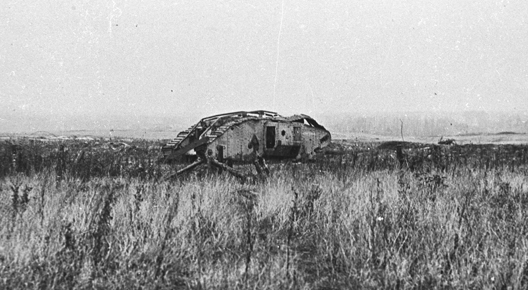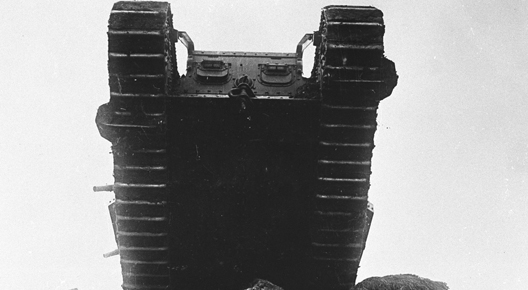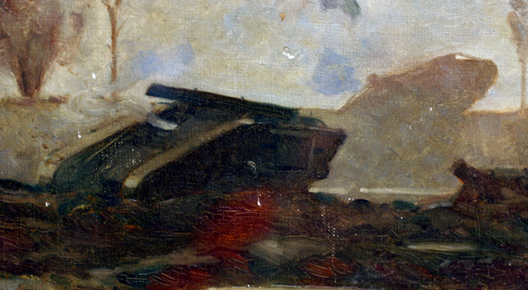The Battle of Cambrai had begun at 6:20am on the 20th November with a stunning advance, spearheaded by tanks and supported by new artillery techniques, but within a few days the British had been fought to a standstill. …
The Battle of Cambrai: Graincourt
Pride of place at the entrance to the Tank Men Exhibition is the Graincourt gun – captured by Albert Baker during Cambrai. This is its story. …
Richard Wain at Cambrai
Richard William Leslie Wain was the second of four Tank Corps soldiers to be awarded the Victoria Cross during the First World War. …
The Battle of Cambrai: Flesquières Ridge
The Battle of Cambrai (20 November 1917) is always deemed to have been a British success, this is true, up to a point, although it had its setbacks….
The Battle of Cambrai: The Fascine
One of the adaptations added during the Battle of Cambrai was the fascine, enabling tanks to cross deliberately widened trenches. …
Tank Corps War Diaries: 17 – 19 November 1917
During November 1917 preparations for the Battle of Cambrai were well underway. Each battalion of the Tank Corps recorded day to day events in War Diaries….
Tank Corps War Diaries: 13 – 16 November 1917
During November 1917 preparations for the Battle of Cambrai were well underway. Each battalion of the Tank Corps recorded day to day events in their War Diaries. …
Tank Corps War Diaries: 7 – 12 November 1917
During November 1917 preparations for the Battle of Cambrai were well underway. Each battalion of the Tank Corps recorded day to day events in War Diaries. …
Tank Corps War Diaries: 1 – 6 November 1917
During November 1917 preparations for the Battle of Cambrai were well underway. Each battalion of the Tank Corps recorded day to day events in their War Diary….
Tank Armament in The First World War
While tanks gave the infantry a huge amount of protection, tank armament was also key in their development during the First World War….
Victoria Cross: Cecil Sewell
One of the most moving stories of the WWI soldiers in The Tank Museum is that of Lieutenant Cecil Sewell, who gave his life to save those of another tank crew….
The Cockcroft
In August 1917, the new Tank Corps had to prove their worth. This was done by the taking of Cockcroft – a German pillbox – during Third Ypres. …
The Battle of Passchendaele – Into Battle
Third Ypres, or Passchendaele, was a controversial battle at the time and has remained so ever since. Disagreement exists over whether it should have been fought at all, over the tactics used and over whether the casualties were worth the gains. …
Cap Badge Submissions
The Tank Corps was formed on 28th July 1917, and its new cap badge was approved by King George V on the 11th September. The badge chosen was one of twelve designs submitted. …
The Battle of Passchendaele – Operation Hush
One of the reasons for launching the Third Battle of Ypres was a British desire to capture the Belgian coastline from the Germans….
The Battle of Passchendaele – Tanks at Third Ypres
Third Ypres was planned as an infantry and artillery attack, with tanks in a supporting role….
The Formation of The Tank Corps
The Tank Corps was formed on 28th July 1917, and its new cap badge was approved by King George V on the 11th September. …
The Battle of Passchendaele – Background & Planning
The German invasion in August 1914 led to the conquest of almost all of Belgium. …
Tanks On Trains In The First World War
Tanks in the First World War were very slow. There were no tank transporters so tanks had to go by train and, as the war went on, they were getting bigger and heavier….
German Responses to the Tank
Most of the articles on this blog look at the tank from a British perspective. In the end, though, it would be the effect they had on the Germans that would decide how useful a weapon they really were….

























